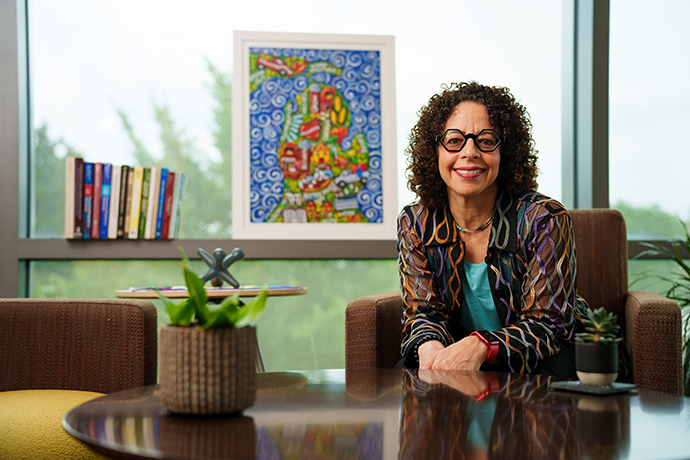MENA category to be included in federal data collection
Dr. Florence Dallo has dedicated her life’s work to advocating for this and shares the impact of the milestone
On March 29, 2024, the Office of Management and Budget (OMB) released the new standards for data collection on race and ethnicity at the federal level. One of the changes is that the race and ethnicity question will include an option for "Middle Eastern or North African” (MENA).
Florence Dallo, Ph.D., MPH, associate dean of the School of Health Sciences (SHS) and professor of public health, is one of the researchers who has spent the past two decades advocating for this. Although MENA individuals have been immigrating to the United States since the late 1890s, they were never included in the census, which led to them not being accounted for in the allocation of resources and federal funding. This began to contribute to inequities and health disparities.
As the MENA population increased in numbers, the importance of representation began to be recognized. However, it was still a lengthy process that took extensive research and advocacy. There previously had not been enough data to make a case for representation, but this changed as more people demonstrated interest in this research. Furthermore, it took time for the MENA population to want to be identified. “We had to reduce the population’s fear of identification,” explains Dr. Dallo, “and help them understand that this really is in their best interest through community building and advocacy.”
Having the MENA identifier will have a great impact on people’s overall health by further opening communication between patients and providers. “From the first day they see their health care provider and complete the intake form, they feel seen,” Dr. Dallo elaborates. “Also, when the provider knows that the patient is Middle Eastern or North African, they might ask certain questions and think about certain diseases that have a higher prevalence in the country of origin. Ultimately, it helps both the patient and the provider ask better questions and really tailor the visit to the patient.”
There will also be a great impact on future research. Previously, the MENA population has been included in the White category; therefore, unlike other minority groups, there hasn’t been data about certain health conditions, such as diabetes, obesity and hypertension, in MENA individuals. Now, the data collected at the federal and the state level will provide a more accurate estimate of health conditions that affect this population. “This category is going to open up so many new doors for better understanding the population and improving health,” Dr. Dallo says. “We will also be better able to secure federal funding for research now that MENA is officially identified as a minority group.”
 |
As part of the U.S. Census Bureau Race and Ethnicity Working Group, Dr. Dallo is excited to see the research that she and her colleagues have conducted, disseminated and discussed come to fruition. Middle Eastern herself, Dr. Dallo immigrated to the U.S. with her family as a young child. Only six at the time, she was already asking herself why some people are healthy and others are not. She realized that public health would help her understand these phenomena and develop and use her skills to make a difference. Dr. Dallo has over sixty publications focused on examining health conditions, behaviors and screening patterns in the MENA population. She looks forward to mentoring and guiding the next generation of students and scholars who are interested in pursuing this field of study and research.
Now that the population has been federally identified, Dr. Dallo hopes to start a grant-funded MENA health research center at Oakland University that serves as a place where students and faculty can continue this research and promote the development of prevention programs, community interventions and education. “I have a lot of optimism and hope that we are moving in the right direction,” says Dr. Dallo passionately. “I look forward to seeing how this evolves, and I’m very grateful to have been a part of this really big movement.”
To learn more about public health at OU, visit the School of Health Sciences’ website.
Read the revised Standards for Maintaining, Collecting, and Presenting Federal Data on Race and Ethnicity.

 July 11, 2024
July 11, 2024
 By Jillian Wolf
By Jillian Wolf









